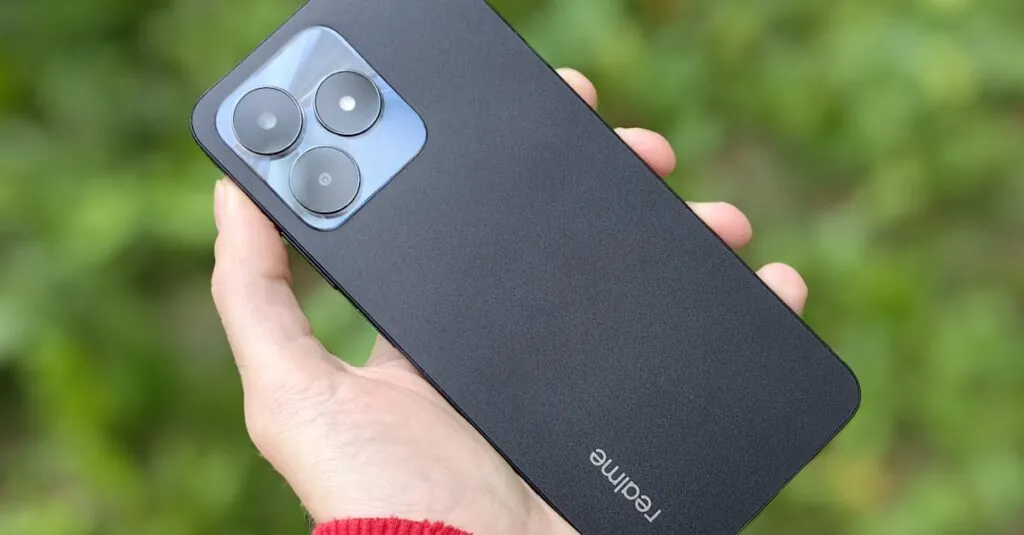In a world where smartphones double as our personal assistants, entertainment hubs, and even our social lives, choosing the right mobile device feels like picking the perfect avocado—tricky, but oh so rewarding! With countless options flooding the market, it’s easy to feel overwhelmed. But fear not, because this guide is here to cut through the noise and help you find the device that suits your lifestyle.
Overview Of Mobile Device Reviews
Mobile device reviews provide essential insights for consumers navigating a crowded smartphone market. Assessments typically cover key features such as performance, design, battery life, and camera quality. Consideration of user experiences often aids in creating a comprehensive picture of each device’s strengths and weaknesses.
Factors influencing device selection include operating system, brand reputation, and price point. High-end smartphones often boast advanced specifications, while budget options cater to essential needs. Reviews frequently highlight unique features that set devices apart, enabling informed choices.
Industry experts analyze various models, presenting detailed comparisons that engage potential buyers. Emphasis on hands-on testing ensures assessments reflect real-world usage, giving readers a sense of how devices perform under typical conditions.
In addition to technical specifications, user feedback plays a crucial role in shaping the review landscape. Real user experiences can reveal long-term reliability and software support, which affect overall satisfaction.
Visual elements, including photos and videos, often accompany reviews, showcasing design details and user interfaces. Some reviews include in-depth performance benchmarks, illustrating how devices handle demanding tasks.
Search engine optimization is vital in crafting effective reviews. Strategic use of keywords directs traffic to relevant content, increasing visibility for those seeking reliable information.
Ultimately, mobile device reviews serve as valuable resources, bridging the gap between consumer needs and manufacturer offerings. As technology evolves, staying current on device reviews remains crucial for making informed purchasing decisions.
Key Features To Consider
Choosing a mobile device requires a careful look at several key features that directly impact user experience.
Design And Build Quality
Design influences first impressions. While sleek lines and attractive finishes appeal visually, durable materials ensure longevity. Weight and ergonomics affect comfort during prolonged use. Compact designs enhance portability, making devices easy to carry. Different brands utilize unique design philosophies, making each device distinct.
Performance And Speed
Performance reflects a device’s ability to operate efficiently under various conditions. Processor type, RAM capacity, and storage options dictate overall speed. Mobile devices with advanced chipsets handle multitasking smoothly, while games and demanding apps run without lag. Benchmarks often indicate how devices perform in real-world scenarios.
Battery Life
Battery life determines usability between charges. Users expect devices that last throughout the day or longer. Factors such as battery capacity and power management software influence longevity. Some smartphones offer quick charging features, minimizing downtime. Evaluating real-world usage reports helps gauge everyday performance.
Camera Capabilities
Camera quality affects usability for many consumers. High-resolution sensors and advanced image processing produce clearer photos. Optical zoom options and low-light performance enhance versatility. Consideration for features like night mode and stabilization can elevate photo quality. Reviews often highlight user experiences with various camera functions.
Software And User Interface
User interface plays a vital role in daily interactions. Intuitive navigation enables seamless operation. Customization options enhance user satisfaction, allowing personalization. Regular software updates ensure devices remain secure and functional over time. Look for user experiences comparing operating systems and interface designs to identify preferences.
Popular Mobile Devices Reviewed
The mobile device market features various options catering to diverse preferences and budgets. Below is an overview of popular devices across different categories.
Flagship Models
Flagship models showcase advanced technology, offering premium features. Apple’s iPhone 14 Pro provides a brilliantly designed interface, exceptional camera capabilities, and a powerful A16 Bionic chip. Samsung’s Galaxy S23 Ultra, featuring a stunning display and an impressive camera system, excels in versatility. Both devices exhibit superior performance and build quality, appealing to tech enthusiasts and professionals alike.
Mid-Range Options
Mid-range options strike a balance between performance and affordability. Google’s Pixel 7 delivers impressive camera quality with advanced image processing at a reasonable price. Samsung’s Galaxy A54 stands out with vibrant display features and good battery life, ensuring usability throughout the day. These devices cater to consumers wanting excellent features without the flagship price tag, making them ideal for everyday users.
Budget Picks
Budget picks provide practical solutions without compromising essential features. Motorola’s Moto G Power excels in battery life, delivering days of usage on a single charge. Similarly, the Samsung Galaxy A14 offers good performance and a solid camera setup at an attractive price point. These devices target consumers seeking value for their money while ensuring a functional mobile experience.
Comparison Of Specifications
A side-by-side comparison of specifications reveals critical distinctions among popular mobile devices. Apple’s iPhone 14 Pro boasts an A16 Bionic chip, providing cutting-edge performance and efficiency. Samsung’s Galaxy S23 Ultra features a Snapdragon 8 Gen 2 processor, enhancing multitasking capabilities for demanding users.
Display quality sets these devices apart; the iPhone 14 Pro offers a Super Retina XDR display with a resolution of 2556 x 1179 pixels, while the Galaxy S23 Ultra presents a Dynamic AMOLED 2X display at 3088 x 1440 pixels, ensuring vivid visuals.
Battery life is another essential factor. The iPhone 14 Pro includes a 3,200 mAh battery, capable of supporting all-day usage with optimized hardware. In contrast, the Galaxy S23 Ultra packs a more robust 5,000 mAh battery, catering to heavy users who rely on their devices throughout the day.
Camera performance varies significantly between these models. With a triple-camera system, the iPhone 14 Pro excels in low-light environments and provides advanced computational photography features. The Galaxy S23 Ultra is equipped with a 200 MP main camera, making it an excellent choice for photography enthusiasts seeking high-resolution images.
Storage options entice potential buyers as well. The iPhone 14 Pro offers configurations ranging from 128 GB to 1 TB, accommodating different user needs. The Galaxy S23 Ultra provides similar choices, stretching from 256 GB to 1 TB, ensuring ample space for photos, videos, and apps.
Lastly, software experience plays a vital role. iOS on the iPhone 14 Pro ensures smooth and seamless navigation, while One UI on the Galaxy S23 Ultra allows for extensive customization, appealing to users who prefer a personalized interface. Each device possesses unique attributes, making it essential to assess personal preferences when making a selection.
User Experience And Feedback
User experience plays a vital role in assessing mobile devices. Many consumers highlight ease of use as a key aspect. Those who interact with smartphones daily appreciate intuitive interfaces. Feedback often centers around how well devices handle basic tasks like calling and texting.
Battery life consistently emerges as a major concern among users. Reports show that longer battery life leads to improved satisfaction. Additionally, quick charging capabilities can significantly impact user experience. Users notice and appreciate features that allow for extended usability throughout the day.
Camera quality receives significant attention as well. Many users report delight in capturing high-quality images, especially under various lighting conditions. The performance of smartphone cameras can make a difference in daily life, influencing social sharing and personal memories.
Software stability also plays a crucial role. Devices that receive regular updates tend to yield higher user satisfaction. Users often share their experiences regarding app performance and compatibility with the software ecosystem. Many prefer devices that adapt to user needs over time through software updates.
Design elements contribute to user feedback, with aesthetic appeal influencing initial impressions. Comfortable grip and lightweight designs often lead to positive remarks. Many users express their preference for durable materials that withstand daily wear.
In-depth reviews reflect user experiences, offering insights into long-term functionality. Consumer opinions shape the decision-making process, emphasizing the importance of feedback from peers. Reviews that include visual content help users visualize features, assisting in informed choices.
User experiences and feedback provide essential guidance for prospective buyers. The collective narrative enhances understanding, ensuring consumers find devices that align with their personal requirements.
Navigating the mobile device landscape can be daunting but informed choices lead to rewarding experiences. By considering expert reviews and user feedback, consumers can pinpoint devices that fit their unique needs. Whether opting for a flagship model or a budget-friendly option, understanding key features like performance, battery life, and camera quality is crucial.
Staying updated on the latest reviews ensures buyers are equipped with the knowledge to make confident decisions. With the right information at hand, finding the perfect mobile device becomes a much simpler task, ultimately enhancing daily life and connectivity.






